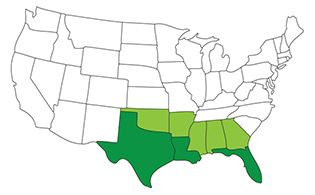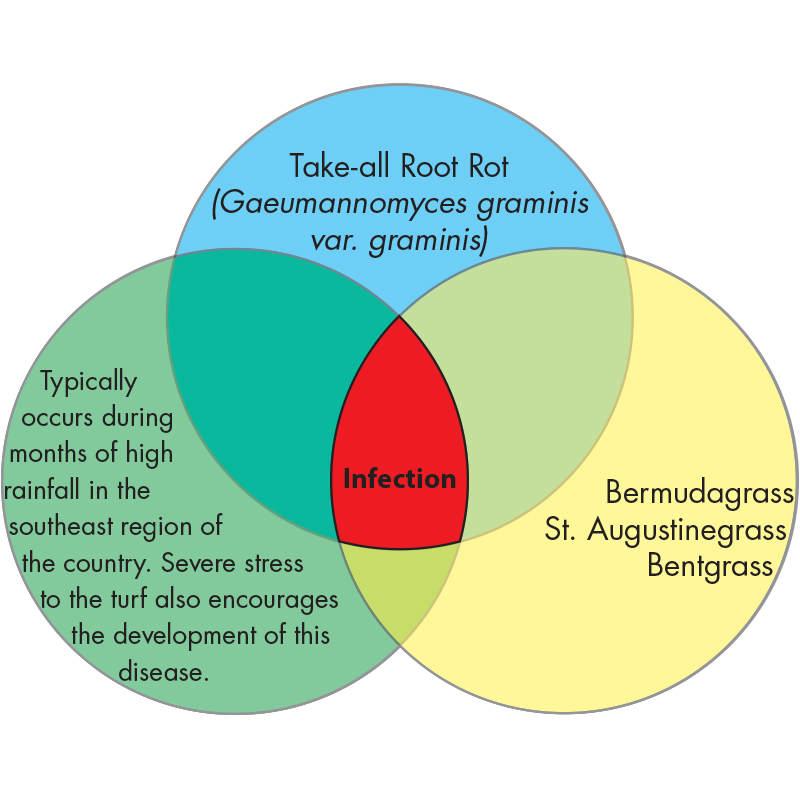
Take-all Root Rot
Gaeumannomyces graminis var. graminis
Take-all Root Rot is a lawn disease that commonly attacks yards in the southeastern United States. Most damage occurs from early to late summer and is caused by the lawn fungus Gaeumannomyces graminis var. graminis.
Identify

Root
Because Take-all Root Rot is a lawn disease that affects the roots of the plant—thereby limiting its ability to absorb water and vital nutrients effectively—healthy lawns under little stress may not show symptoms. For lawns that do show, the first signs of Take-all Root Rot are yellowing or light-green circular patches on your lawn, ranging in size from a few inches to a few feet in diameter. Grass roots take on a whitish appearance with sporadic black lesions caused by the lawn fungus. Stolons and rhizomes may have black lesions as well.
Life Cycle
A Take-all Root Rot infection can occur only if all of the following conditions are present: 1. Pathogen: Gaeumannomyces graminis var. graminis lawn fungus 2. Host: Bentgrass, Bermudagrass or St. Augustinegrass 3. Environment: Southeastern climates during months of high rainfall

Control
Because you can't change your environment, the best way to control Take-all Root Rot is to create conditions that will foster a healthy lawn. Not only will this make your yard unfavorable for Take-all Root Rot growth, but it will also lower your risk of extensive damage should the lawn disease develop—plus you'll have the type of lawn you'll want to live on. For Take-all Root Rot control and lawn fungus treatment, TruGreen® recommends the following cultural control tips: • Raise lawn-mowing height during times when environmental conditions are conducive for disease • Apply high levels of potassium along with a balanced fertility program • Use slow-release forms of nitrogen
Diagram





Facebook
X
Youtube
Copy Link
Email